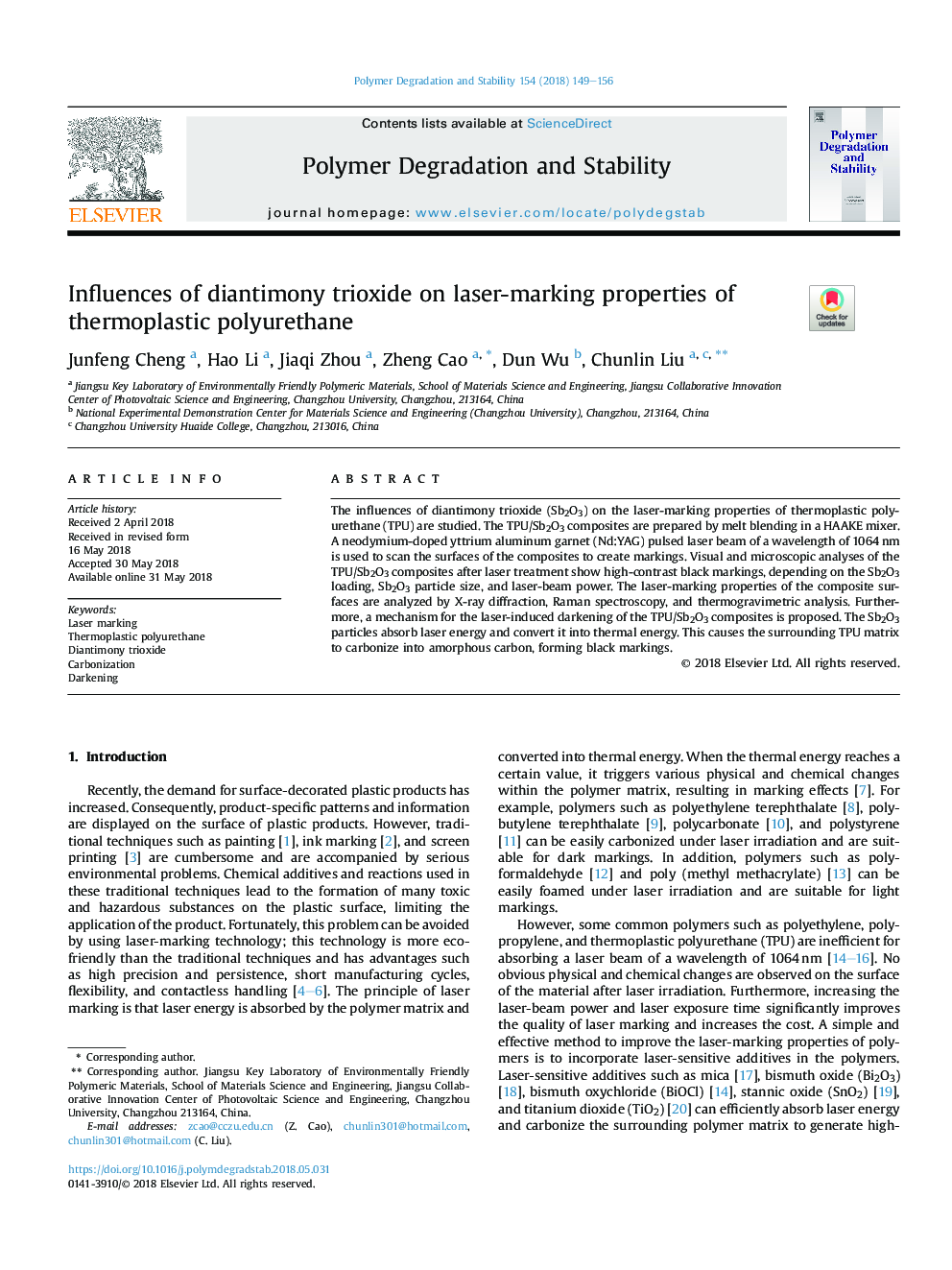| Article ID | Journal | Published Year | Pages | File Type |
|---|---|---|---|---|
| 7823937 | Polymer Degradation and Stability | 2018 | 8 Pages |
Abstract
The influences of diantimony trioxide (Sb2O3) on the laser-marking properties of thermoplastic polyurethane (TPU) are studied. The TPU/Sb2O3 composites are prepared by melt blending in a HAAKE mixer. A neodymium-doped yttrium aluminum garnet (Nd:YAG) pulsed laser beam of a wavelength of 1064â¯nm is used to scan the surfaces of the composites to create markings. Visual and microscopic analyses of the TPU/Sb2O3 composites after laser treatment show high-contrast black markings, depending on the Sb2O3 loading, Sb2O3 particle size, and laser-beam power. The laser-marking properties of the composite surfaces are analyzed by X-ray diffraction, Raman spectroscopy, and thermogravimetric analysis. Furthermore, a mechanism for the laser-induced darkening of the TPU/Sb2O3 composites is proposed. The Sb2O3 particles absorb laser energy and convert it into thermal energy. This causes the surrounding TPU matrix to carbonize into amorphous carbon, forming black markings.
Related Topics
Physical Sciences and Engineering
Chemistry
Organic Chemistry
Authors
Junfeng Cheng, Hao Li, Jiaqi Zhou, Zheng Cao, Dun Wu, Chunlin Liu,
